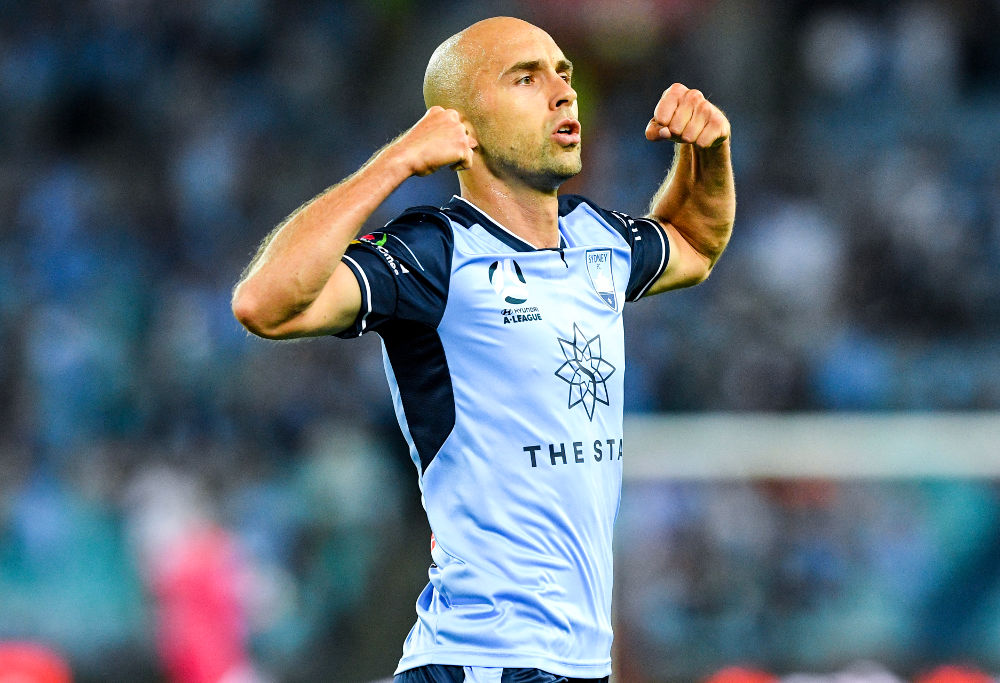Young excellence, promotion battles, and a happy farewell: The Australian team of the week from players around the globe
Even though St.Pauli ultimately lost a high-scoring affair, Jackson Irvine was a standout, as well as scoring a late goal.

Watching the Roar’s number come up in the early qualifying rounds of the AFC Champions League on Tuesday night – or, rather, peel off and come fluttering down, a sickly image of the club’s general state – the extent to which the A-League is relying on Sydney FC became even more apparent.
No one expected Brisbane to illuminate this season’s continental competition, but it was nonetheless galling to see them drive headfirst into the muck upon which our already lowered expectations were uneasily resting.
Their problems, on and off the pitch, are too great in number and too caustic in nature to address as an aside in this article, and the first impression they’ve made for our league in Asia this season is one we’re now hoping Sydney – and to a lesser extent, the Victory – can beautify.
Sydney and Melbourne play one another before they kick off their Asian campaigns, and so we’ll get an excellent opportunity to compare them directly before the heavy extra-workload hits.
The Victory’s first Asian opponents are Ulsan Hyundai, a team that finished third on goal difference in the 2017 K-League season, with a squad containing a player, Mislav Orsic, who has some experience terrorising A-League teams in Asia.
Orsic lit up the Roar last year with two goals and a display of scorching wing-play.
Just 25, the Croatian played in every K-League game last season for Ulsan, scoring nine goals and laying on three assists. Jason Geria, Melbourne’s primary right-back, will need to be at his most defensively-mindful if he’s to avoid embarrassment, and Kevin Muscat would do well to game-plan with Orsic’s threat firmly in mind.
Victory also play Newcastle, currently the league’s second-placed team, before the Ulsan tie, and so could conceivably have lost two of the three matches coming in. They have not been consistent this season, but need to find themselves before they meet the South Koreans.
Sydney’s opponent is yet to be set, coming as they will from the playoffs. The champions have drawn three of their last four league matches, and – claims of a team-wide plague of gastro in the most recent draw notwithstanding – seem to be playing at a few rungs below their normal level.
[latest_videos_strip category=“football” name=“Football”]
Still seven points clear at the top, this might actually be a good sign; most taxing, for A-League clubs, is that the Champions League begins two-thirds of the way through the season, and their Asian opponents are generally rolling through the pre-season in their domestic leagues.
Although this can mean Australian clubs have the opportunity to catch rusty teams on their heels early in the competition, that advantage quickly evaporates, and the disadvantage of increased fatigue sets in.
The Champions League round of 16 first-leg is scheduled for May 7, a day after the A-League grand final. There are significant scheduling issues for Australian clubs throughout the tournament, and should the Sky Blues make deep progress this year in both domestic and continental competitions, they’ll need to conserve their energy most efficiently indeed.
Just the fact that the Champions League begins so many months after the Australian entrants are set means there is a huge margin for fluctuation anyway. The A-League can be a volatile place at the best of times, and so Sydney’s almost unprecedented consistency – a result of have perhaps the strongest, most settled squad in league history – means this is the A-League’s best ever shot at a domestic-continental treble.
When Western Sydney won the Asian Champions League, it was an astonishing, unlikely run that came at the complete cost of their league campaign. Sydney might just have the team to compete for both.

Adrian Mierzejewski (AAP Image/Brendan Esposito)
So, what does this mean for the A-League’s yearly advertising campaign in Asia? Our league, less moneyed and smaller than most of our Asian neighbours’, is constantly fighting up a division or two on the continent. But we are ambitious, and we take defeat – especially harrowing defeat – badly.
The growth of the A-League in part depends on us making progress – or at least offering a convincing impression of making progress – in Asia. The league’s growth seems to be slowing a little this season, and so Sydney’s Asian fate in 2018 seems even more important.
For some, the league has lost its lustrous patina over the last 18 months, as competitiveness has dwindled under the weight of Sydney’s dominance.
Ironically, to stoke the hopes of a historic Aussie-Asian treble – and thus interest in the A-League generally – over the next four months, we might need Graham Arnold’s side to be more dominant than ever.
By the time we reach mid-February, the image of Eric Bautheac’s jersey pitifully repaired with medical tape will have hopefully been painted over by a confident, capable Champions League performance from Sydney or Melbourne.
As much as it seems an ill-fitting appendix to an A-League season, as unfavoured as Australian teams may seem compared to the might of the Chinese or Japanese giants, and as tedious as more Sydney success might feel for fans of other teams, the Champions League remains an important battleground for the growth of Australian football.
Right now it’s our super-soldiers in Sky Blue that we have little choice but to rally behind.